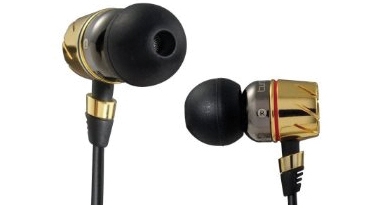In-Ear Headphones Face Off Page 11

TEST TRACKS
Michael Ruff , "Wishing Well," from Speaking in Melodies (Sheffield Labs)
A blues-infused jazz track with a deep, funky bass groove. There's a ton of great detail throughout, including a close-miked drum kit with nicely defined struck cymbal; a bit of horns here and there, which should be loud and natural but not strident; and a trio of background vocalists spread across the stage who should all be easily followed and well delineated in position. Sheffield's superb recording captured an almost milky smoothness in Ruff's voice, along with his subtle humming and note singing during the piano solo, and there's a short, almost muffled bass solo played on the upper register of the instrument in which a careful listen reveals transient-edge detail in the plucks and the subtle ascension of the pitch on the last note as the bassist works the string. Very sweet.
Minnesota Orchestra, Eiji Oue, "Finale, Firebird Suite," from Stravinsky: The Song of the Nightingale/The Firebird Suite/The Rite of Spring (Reference Recordings)
This movement, as captured here by Reference Recordings, is one of the most revealing 2 minutes and 48 seconds ever put to disc. It opens with soft, mournful horns and violins that have a sweet, velvety texture. The rest of the instruments have an uncommonly pure tone and dimensionality, including the dinging triangle that fl oats appropriately above the rest of the orchestra. This is a great recording for checking dynamic range - the musicians rapidly ramp up the volume in a couple of spots. And the kettledrums that get pounded in a point-counterpoint with the horns at the end are a good gauge of bass response. On the best headphones, you also get the vastness of the hall.
Babatunde Olatunji, "Cosmic Rhythm Vibrations," from Circle of Drums (Chesky)
If your headphones or speakers can't readily produce 20 to 25 Hz with decent sound level, just skip this one. You'll miss the whole point of this amazing track, and really this whole album of hypnotic African drumming. The track starts with some almost sickening low-frequency bass moans that are more felt than heard (perhaps from the synthesizer listed in the credits), followed by various drums, big round bell and chime notes with long decay times, and clicking of sticks. Then there's some drum with a kind of rubbery texture I've never heard from a skin before (must be that "talking drum") and, later, a struck cymbal or metal rattle with a shimmer that's difficult to reproduce without turning into a kind of indistinct whoosh. The track is a full 21 minutes long and picks up speed, complexity, and power as it goes along, but its bottom end is the bottom line: It's the steady, rhythmic, deep bass felt in your body that is so difficult for any headphone to faithfully reproduce.
Jason Weaver, "I Can't Stand the Pain," from Monster Ultimate Headphone Test & Demonstration Disc (originally on Love Ambition, Motown)
This classic 1995 R&B track is the real deal. It starts with a variety of male voices repeating the words "I can't stand the pain" against some organ notes before a deep and very taut bass line comes in to carry the beat. Weaver's high-pitched adolescent vocal is super-sweet and very reminiscent of a young Michael Jackson (no surprise, as Weaver won awards for his portrayal of MJ in a TV miniseries).
Amanda Marshall, "The Gypsy," from Everybody's Got a Story (Columbia)
This nicely produced R&B/pop track from singer/songwriter Amanda Marshall begins with an extended and soulful violin solo that should reproduce with some body and texture without sounding too grating or hard on the high notes. It's followed by the introduction of a heavy bass line that runs throughout and, in the way of many commercial recordings, is really too loud and thumpy for its own good. But there are fi nely detailed guitar and organ notes, and Marshall's rich voice and many dubbed background vocals and harmonies are nicely mixed across the soundstage.
Common Rotation, "Union Dues," from Isalie (Common Rotation)
This low-budget, self-released album features clean but sparse recordings that highlight the considerable vocal powers of Eric Kufs and Adam Busch along with the versatility of their accompanist, Jordan Katz. This particular track appears to have been recorded in an intimate coffee house/ club environment, or at least a room that lent a touch of natural reverb to Kufs's lead baritone. The result is that his voice sounds a little recessed against the immediacy of his close-miked guitar, and his lyrics can be hard to hear. That's what makes this track revealing: It takes a speaker or headphone with a slightly elevated midrange to bring him out of his pocket.
























































